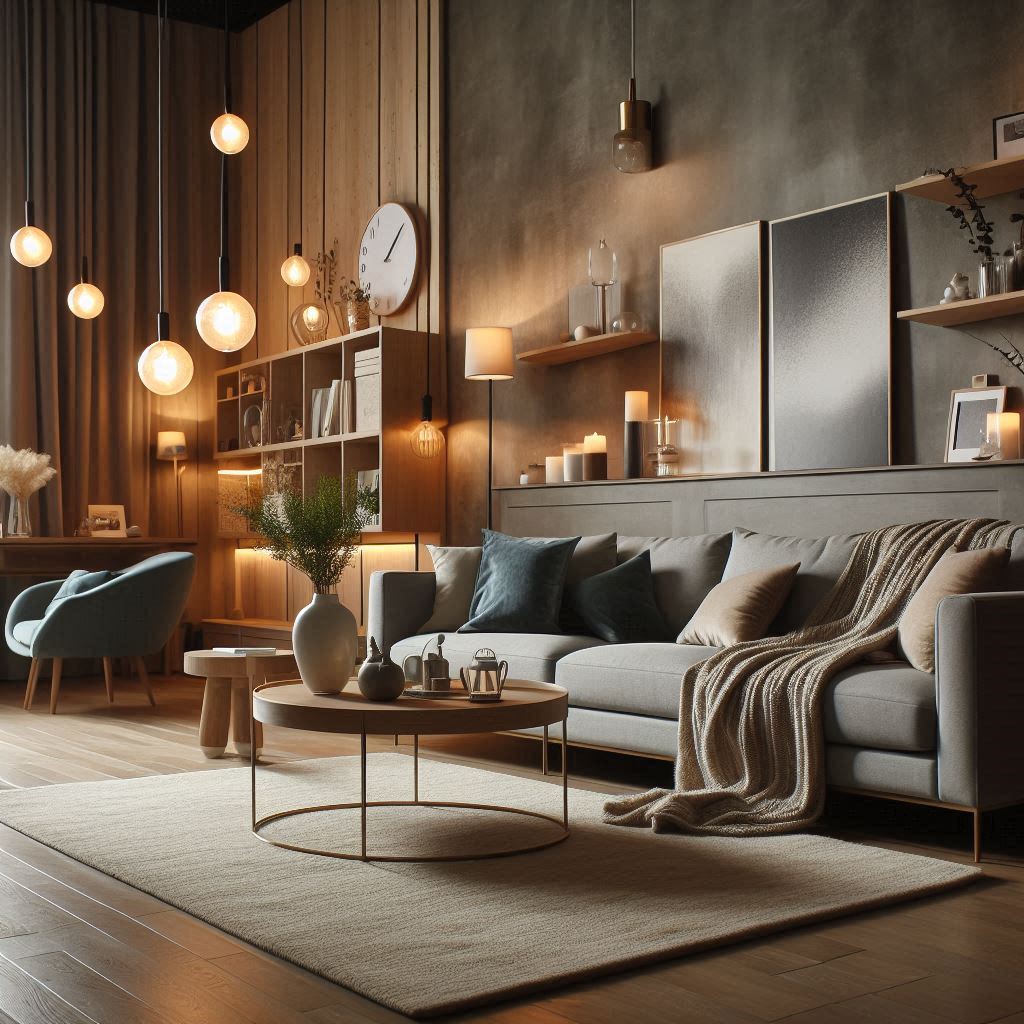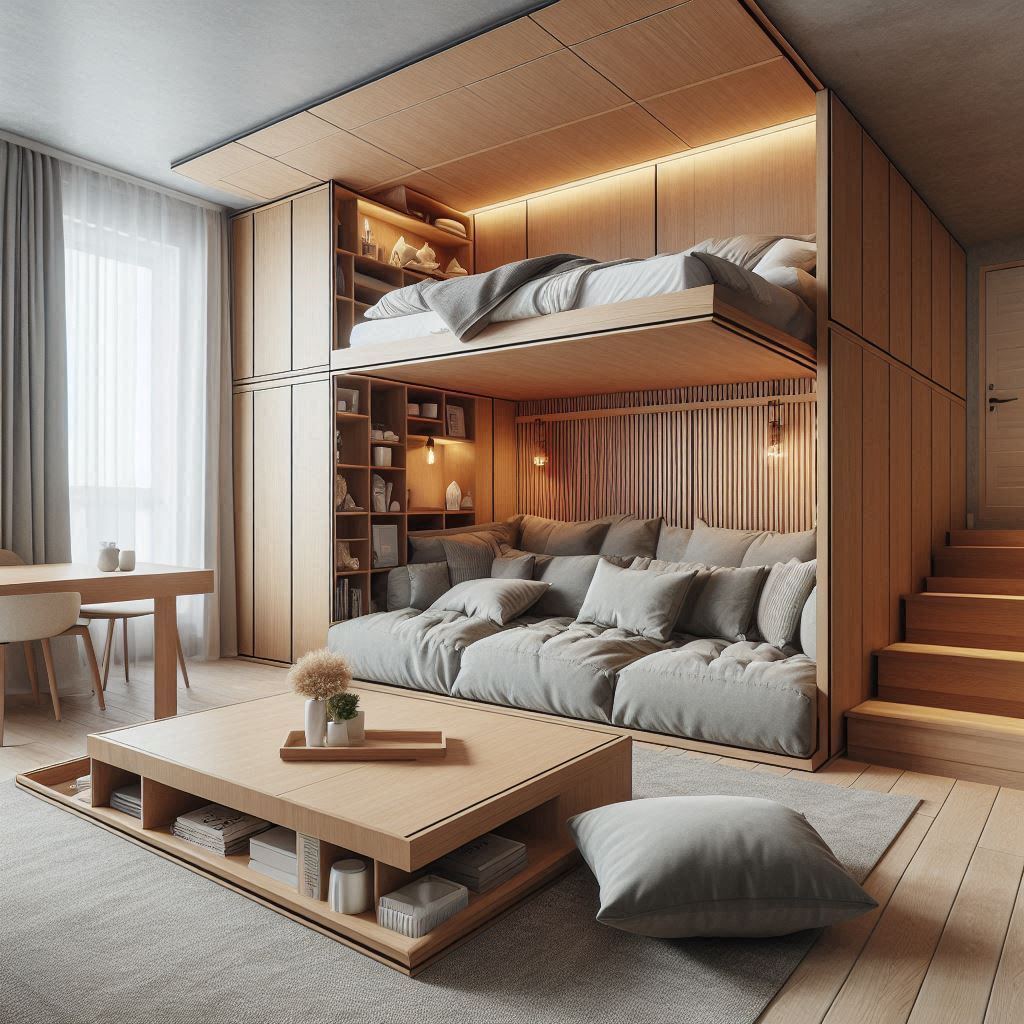Deft interior design is all about creating spaces that feel good and work well. Have you ever walked into a room and felt like it just flows? That’s because of great design principles!

So, what makes a space feel comfortable and easy to move around in? Are there special rules to follow? The answer is yes! By using clever design ideas, you can turn any room into a happy place.
For example, how do colors and furniture choices affect the look and feel of a room? What about lighting and space planning? These details matter!
In this article, you will discover seven must-follow deft interior design principles that can help you create better flow in your spaces.
Let’s explore how simple changes can make a big difference in how people feel when they enter a room.
Are you ready to learn more about making spaces work for everyone?
What Are the Key Principles of Deft Interior Design for a Comfortable Home?
Deft interior design plays a crucial role in how people experience spaces. When designers follow key principles, they create rooms that are not only beautiful but also easy to live in.
For instance, choosing the right colors can change how a room feels. Light colors make a space feel bigger, while dark colors can make it cozy.
Additionally, arranging furniture wisely helps people move around comfortably. Having enough space between pieces allows for easy movement.
Furthermore, lighting sets the mood. Bright lights make a room feel lively, while soft lights create a calm atmosphere.
By focusing on these important aspects, interior designers can make homes more inviting and functional.
This way, everyone can enjoy their living spaces more.
So, whether you are a designer or someone who loves to decorate, remember that following deft interior design principles can lead to happier, more enjoyable rooms.
How Can Deft Interior Design Principles Create Comfortable Spaces?
Understanding deft interior design is important for creating beautiful and functional spaces. When you follow the right principles, you can make any room feel welcoming and easy to use.
Have you ever walked into a home and felt instantly comfortable? That comfort often comes from smart design choices.
As you read on, you will discover seven must-follow deft interior design principles that can help you improve the flow in your spaces.
These principles can make a huge difference! They guide you in choosing the right colors, arranging furniture, and picking the best lighting.
By learning and applying these ideas, you can transform any room into a place where people feel happy and relaxed.
So, let’s dive into these key principles and see how they can elevate your designs. Get ready to create amazing spaces that everyone will love!
What Are the Key Principles of Deft Interior Design for Better Flow?
Deft interior design is all about making spaces that feel good and work well. Here are seven must-follow principles that can help you create better flow in your designs, ensuring they are both functional and inviting.
1. Choose the Right Colors
Colors have a powerful impact on how a room feels.
Light colors, like whites, creams, and pastels, can make a space feel larger and more open.
In contrast, dark colors, such as deep blues or rich greens, create a cozy and intimate atmosphere.
When choosing colors, consider how you want people to feel when they enter the room.
For example, calming blues and greens can create a relaxing environment perfect for bedrooms or sitting areas, while warm yellows and oranges can bring energy and cheerfulness to kitchens and dining rooms.
Thus, selecting the right colors is crucial in deft interior design, as it helps set the mood and emotional tone of the space.

2. Plan the Layout Carefully
Arranging furniture wisely is key to creating good flow.
When planning the layout, ensure there is enough space between furniture pieces for easy movement.
Ideally, leave at least two to three feet of space for walkways to allow people to move comfortably without bumping into things.
Additionally, consider how people will use the space.
For example, in a living room, arrange seating to encourage conversation, facing each other rather than against the walls.
This thoughtful layout promotes interaction and makes the space feel inviting.
Overall, a well-planned layout is essential in deft interior design, as it enhances the functionality and usability of each area.

3. Use Lighting Effectively
Lighting plays a significant role in setting the mood in a room.
A combination of natural light, overhead lights, and lamps can create a warm and inviting atmosphere.
Start by maximizing natural light through windows or skylights during the day.
Then, layer lighting by adding bright task lights in work areas, such as kitchens or home offices, and soft ambient lighting in living rooms and bedrooms.
For example, using floor lamps and table lamps with warm bulbs can create a cozy ambiance.
Furthermore, consider dimmers to adjust the light level based on the time of day or the mood you want to create.
By using lighting effectively, you can significantly enhance the overall feel of a space in deft interior design.

4. Incorporate Functional Furniture
Choosing furniture that fits the space and serves a purpose is vital for a well-designed room.
Look for multi-functional furniture pieces, like coffee tables with built-in storage or sofas that convert into beds.
This type of furniture not only saves space but also keeps the area organized and clutter-free.
For instance, ottomans can double as seating and storage, making them perfect for small living rooms.
Additionally, ensure the scale of the furniture matches the size of the room.
Oversized furniture in a small room can make it feel cramped, while small pieces in a large room can feel lost.
Therefore, incorporating functional furniture is a key aspect of deft interior design, as it enhances both style and practicality.

5. Add Personal Touches
Personal items can make a space feel like home and reflect your unique style.
Consider displaying photos, art, or souvenirs that tell your story and bring joy.
However, it’s important to maintain balance.
Too many decorative items can lead to a cluttered feel, so choose a few key pieces that stand out and resonate with you.
For example, you might create a gallery wall featuring your favorite family photos or artwork from local artists.
Moreover, using decorative objects, such as vases or books, can add character without overwhelming the space.
By thoughtfully adding personal touches, you enhance the warmth and individuality of your home, a crucial element in deft interior design.

6. Create a Focal Point
Every room needs a focal point that draws attention and adds interest.
It could be a stunning piece of art, a striking fireplace, or an interesting piece of furniture, like a beautifully upholstered chair.
Having a clear focal point helps guide the eye and provides a sense of structure to the space.
For example, in a living room, you might arrange seating around a fireplace or a piece of art, encouraging people to gather and appreciate the design.
Additionally, using contrasting colors or textures can further highlight the focal point, making it even more striking.
Overall, creating a focal point is essential in deft interior design, as it enhances the visual appeal and cohesion of the room.

7. Pay Attention to Textures
Mixing textures adds depth and warmth to a room, making it feel more inviting.
Combining soft fabrics, like cushions, throws, and rugs, with hard surfaces, such as wood, glass, and metal, creates a pleasing contrast that enhances the overall design.
For instance, pairing a plush velvet sofa with a sleek coffee table can create a beautiful balance.
Additionally, incorporating various materials, like woven baskets or ceramic vases, can introduce visual interest and tactile variety.
When layering textures, aim for harmony and balance, ensuring that no single element overwhelms the others.
By paying attention to textures, you can enrich your space, making it feel cozy and sophisticated—an essential aspect of deft interior design.

Conclusion
In conclusion, deft interior design is essential for creating spaces that feel welcoming and work well.
By following these seven principles, designers can enhance the flow of any room, making it more enjoyable for everyone.
First, choosing the right colors sets the mood, while, at the same time, careful planning of the layout ensures smooth movement.
Next, effective lighting brightens up spaces and creates warmth.
In addition, incorporating functional furniture keeps areas organized, while personal touches add character.
Furthermore, creating a focal point draws the eye, and mixing textures adds depth.
Overall, these steps not only improve the look of a room but also enhance how people feel in it.
So, whether you’re designing a cozy home or a bustling office, remember that applying these deft interior design principles can lead to happier, more functional spaces.
Keep these tips in mind, and you will see the positive difference they make!
